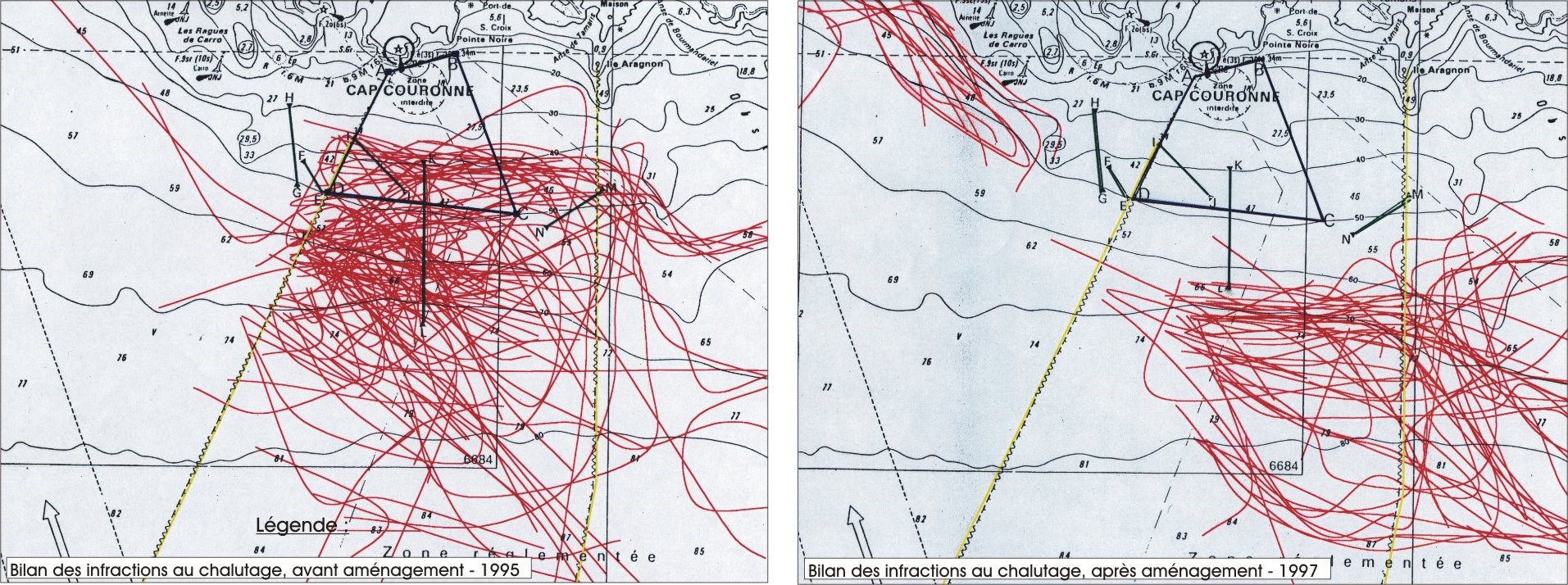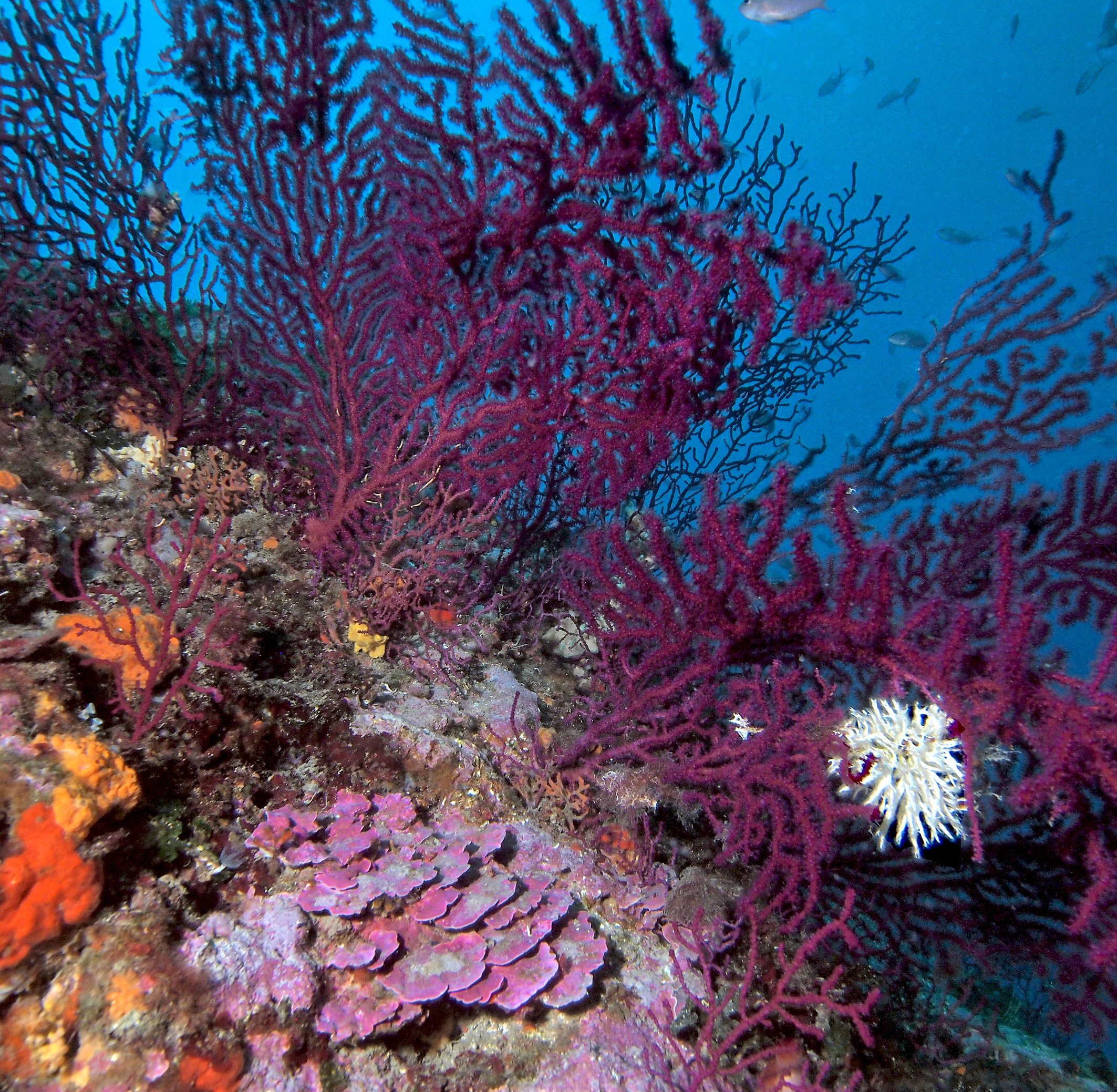


Apart from creation of 2 no-takes reserves, the originality of PMCB is the use of artificial reefs, with the deployment of 4.884 m3, both for production and protection against illegal trawling. The success of protection reefs is showed on Figure 3, with the road of illegal trawling plotted before (1995) and after reef deployment and creation of the no-take reserve in Couronne (1997). The results are the decreasing of fishing pressure on the coastal band, by removal illegal trawling activities, witch are not selective (a lot of juveniles are caught) and mortality by fishing juveniles is the principal factor of the falling of catches. The efficiency of anti-trawling reefs allowed a better sharing of space and resources between local fishermen. It help traditional small scale fisheries (gillnet, trammel net, hook on line) who have selective techniques (catch only adults and thus facilitating conservation of fishing resources) The other essential effect of protection reefs is to preserve the most productive and fragile natural habitats (Posidonia meadows and coralligenous reefs) from mechanical destruction by trawlers. These damages have important ecological and economic repercussions, because these habitats serving for spawning, nurseries, recruitment and feeding areas for the most part of the exploited resources.
The willingness of local artisanal small-scale fishers to avoid illegal trawling into the 3 NM, in particular on sensitive habitats. Fishers decided themselves to create a second no-take reserve in PMCB in 1996: Couronne (210 ha), who is in vicinity of a Cape, with high biodiversity and rich exploited resources, particularly a famous spawning area for seabass during winter. Fishers wanted to protect the no-take reserve with a complementary deployment of anti-trawling reefs around and inside the reserve.
An adaptive management is necessary and the PMCB was built on the strengths and weaknesses of local context: artificial reefs have played a role in resolving the antagonisms and conflicts between small-scale fisheries and illegal trawling fisheries.
In the Côte Bleue Marine Park, the two categories of artificial reefs (production and protection reefs) are not dissociable of the two no-takes reserves. These management tools worked in an additional way and contributed to the preservation of the traditional small scale fisheries on the Côte Bleue territory, while these fishing activities are decreasing in the nearby zones.
Artificial reefs worked well and protection reefs played a police role 24h/24 and the deployment of 326 heavy modules creating 17.5 km of barriers allows to reduce illegal fishing, protect natural sensitive habitats and permits a better sharing of space and resources between fisheries.